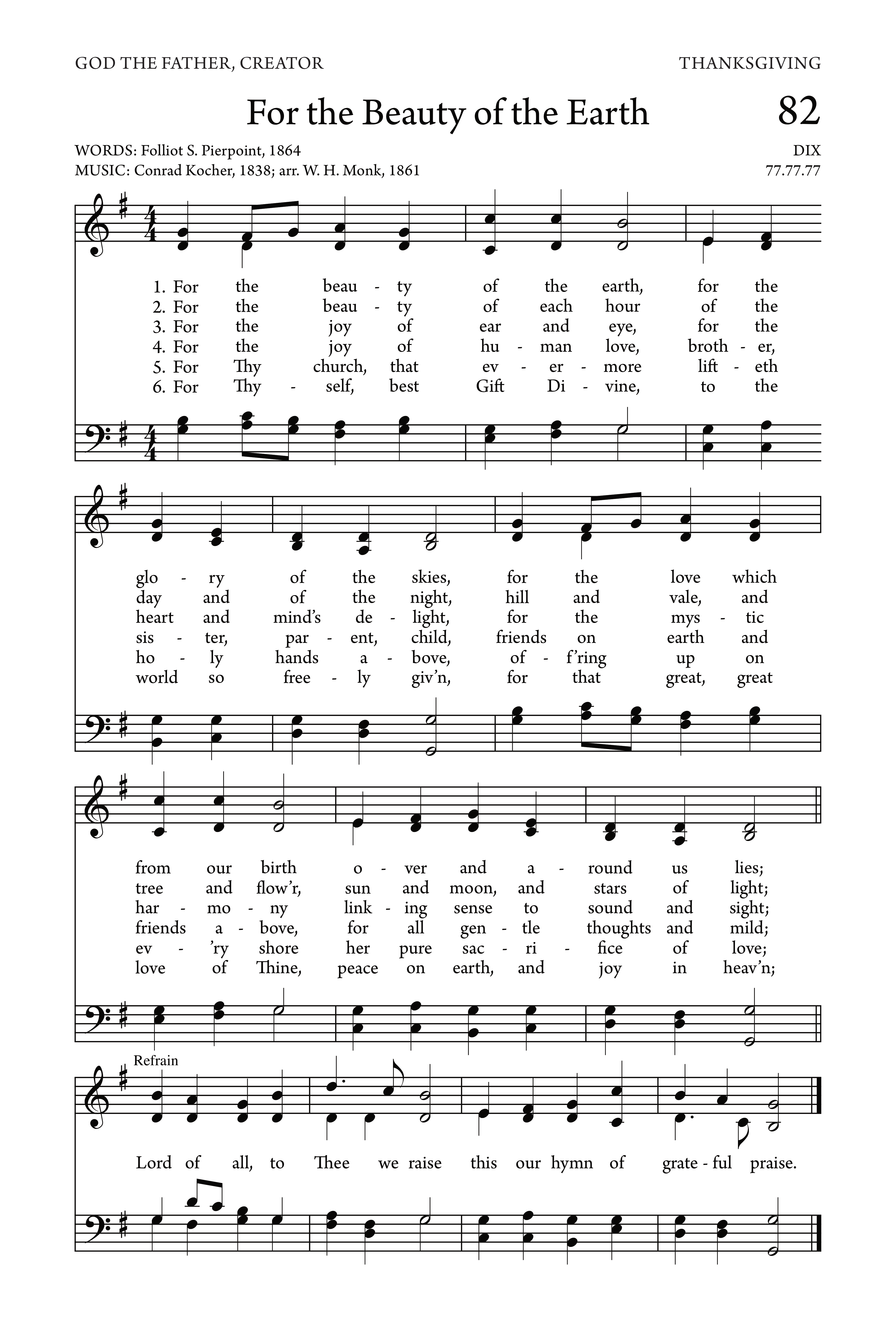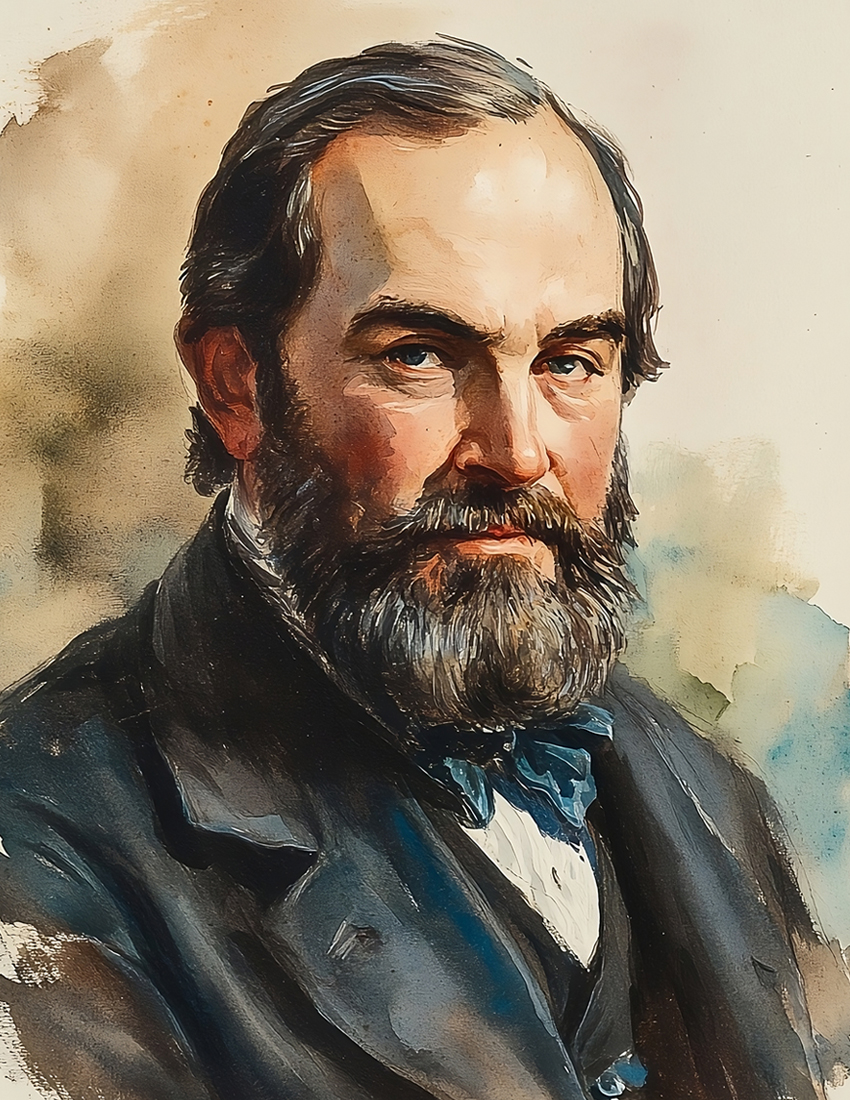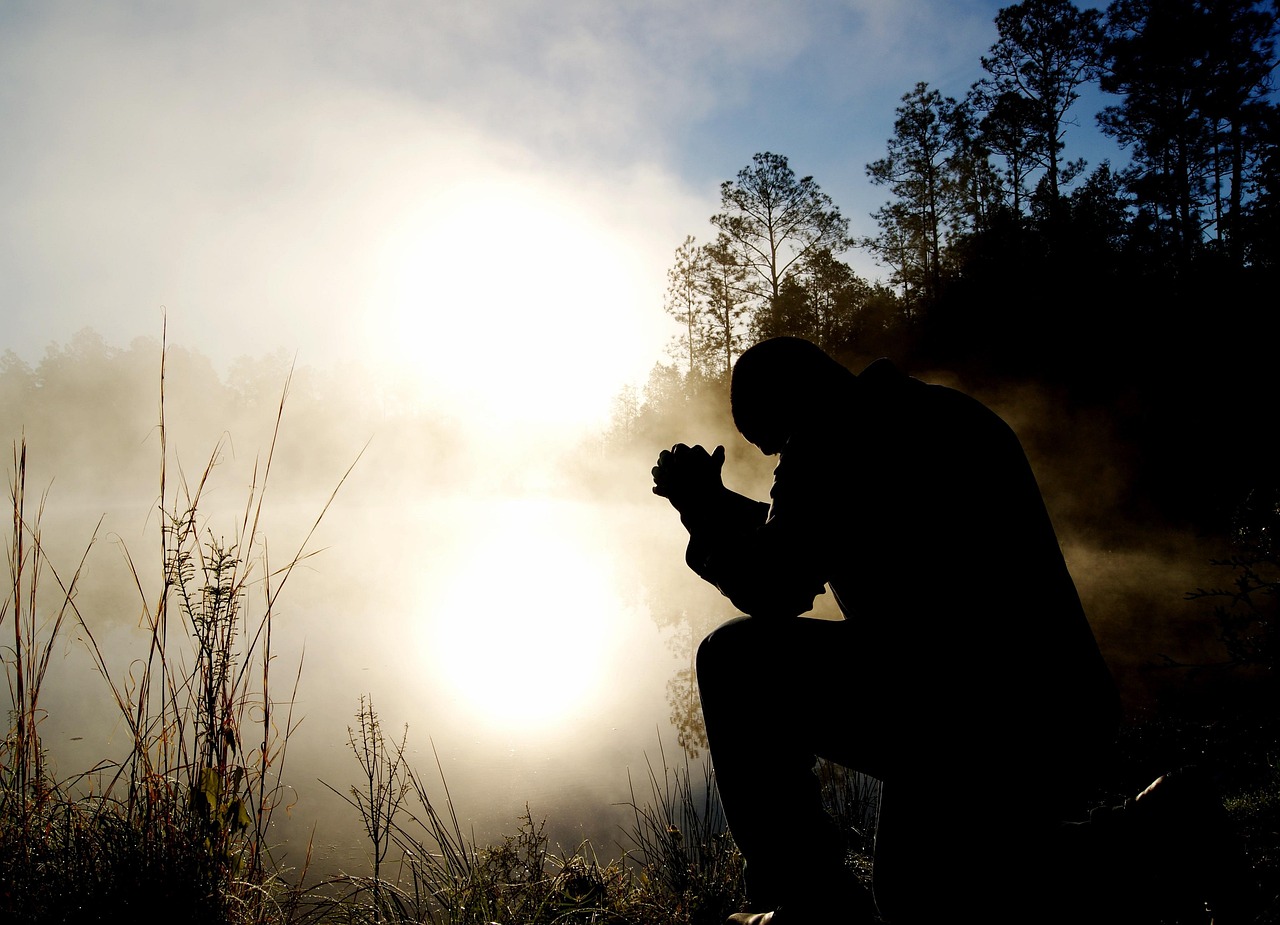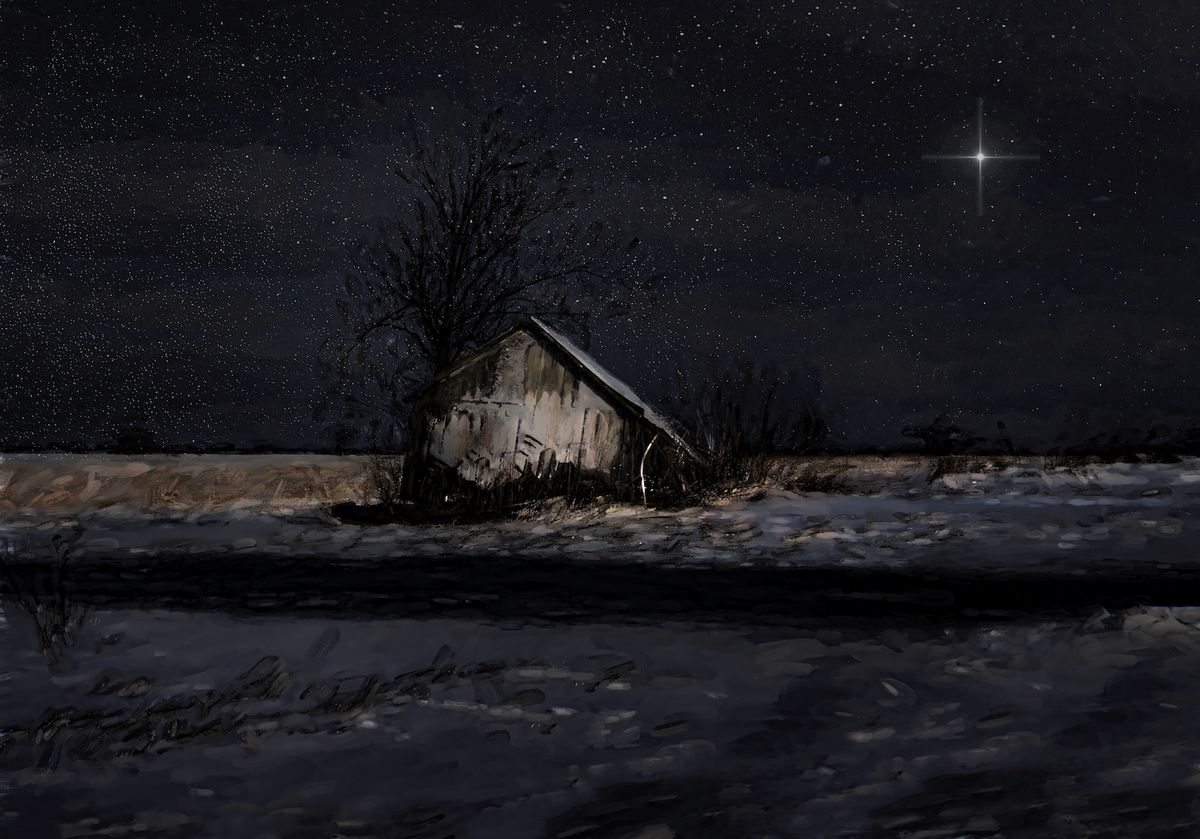For the Beauty of the Earth
By Folliott Sandford Pierpoint
Lyrics
for the glory of the skies,
for the love which from our birth
over and around us lies.
Christ, our Lord, to you we raise
this, our hymn of grateful praise.
of the day and of the night,
hill and vale and tree and flower,
sun and moon and stars of light,
brother, sister, parent, child,
friends on earth, and friends above,
for all gentle thoughts and mild,
to the world so freely given,
agent of God's grand design:
peace on earth and joy in heaven.
Bible Reference
Psalm 19:1-6
About This Hymn
“Whatsoever things are true, whatsoever things are honest, ... just, ... pure, ... lovely, ... of good report, ... think on these things.” — Philippians 4:8 (KJV)
The beloved hymn “For the Beauty of the Earth” eloquently expresses gratitude for many of life’s blessings—gifts that are often taken for granted. With literary grace and spiritual depth, the hymn leads the worshiper to reflect on the splendor of creation, the joys of human fellowship, and the rich spiritual heritage of the Church. Each stanza draws attention to a different category of blessings, ultimately directing “grateful praise” to God, the source of every good and perfect gift (James 1:17).
The hymn opens with a poetic appreciation for the natural world—the sun, the flowers, the stars—all pointing to the Creator’s handiwork. It then shifts to recognize the value of relationships: the joy of family, the comfort of friends, and the love shared within the home. These lines celebrate the emotional and social richness that fills our lives with meaning. Most significantly, the text offers thanks for the Church and its divine mission in the world, acknowledging it as God’s appointed means for sharing His grace and truth among humanity.
The hymn was written in the late spring of 1864 by Folliott Sandford Pierpoint, then a 29-year-old schoolteacher and poet, while he was enjoying the serene beauty of his hometown of Bath, England. Surrounded by the picturesque countryside and gazing out at the winding River Avon, Pierpoint was overcome with a sense of wonder and gratitude. From this moment of inspiration flowed a heartfelt expression of praise, which he originally titled “The Sacrifice of Praise.” The poem was first published that same year in a collection bearing the same name. It contained eight six-line stanzas, though most modern hymnals include only four or five. One often-omitted stanza beautifully acknowledges the supreme blessing of God Himself:
For Thyself, best Gift Divine! To our race so freely given;
For that great, great love of Thine, peace on earth and joy in heaven:
Lord of all, to Thee we raise this our hymn of grateful praise.
Pierpoint, a lay member of the Anglican Church, received his education at Queen’s College, Cambridge, and taught classics at Somerset College. Although he went on to publish seven volumes of poetry and hymn texts—many of which reveal his love of nature and his deep Christian faith—he is remembered primarily for this single, radiant hymn.
The tune most commonly associated with “For the Beauty of the Earth” is known as “Dix,” named after its use in William C. Dix’s hymn “As With Gladness Men of Old.” The melody was composed by Conrad Kocher, a prominent 19th-century German church musician and reformer born in Württemberg in 1786. Kocher’s music brings a rich harmonic balance to Pierpoint’s text, employing antiphonal, or call-and-response, phrasing. This structure allows congregations to experience the hymn as a shared celebration—one group singing the first couplet and another responding with the second—culminating in a united chorus of praise in the refrain.
Although originally written for use during the Holy Communion service, “For the Beauty of the Earth” has become especially popular during the Thanksgiving season, where its themes of gratitude and celebration of God’s bountiful gifts resonate deeply. It has also become a favorite hymn among children, thanks to its vivid imagery and accessible language.
The spiritual and emotional effect of hymns like this one was once beautifully described by Joseph Addison, who wrote:
“Music religious heat inspires,
It wakes the soul, and lifts it high,
And wings it with sublime desires,
And fits it to bespeak the Deity.”
Indeed, “For the Beauty of the Earth” continues to fulfill that role—lifting the soul toward God in joyful thanks, and reminding believers of the wonder of His creation, the warmth of human connection, and the glory of His eternal presence.


📬 Subscribe to Our Devotional Updates
Receive weekly hymns, devotionals, and website features directly in your inbox.
Hymn Information

- Category: Hymn
- Author/Writer: Folliott Sandford Pierpoint (1864)
- Added: June 12, 2025
- Last Updated: June 13, 2025
- Views: 1774
MIDI File
Recent Blog Posts
-
 How to Develop a Consistent Prayer Schedule
How to Develop a Consistent Prayer Schedule
Dec 11, 2025 -
 How to Forgive Someone Who Deeply Hurt You
How to Forgive Someone Who Deeply Hurt You
Dec 11, 2025 -

-
 Why Christmas Is Celebrated on December 25
Why Christmas Is Celebrated on December 25
Dec 11, 2025 -
 10 Most Renowned Hymn Writers
10 Most Renowned Hymn Writers
Dec 10, 2025
Visit Us on Social Media
Latest from X (Twitter)
Tweets by HymnalLibraryLatest from Facebook
Latest on YouTube
Daily Bible Verse
Disclaimer
The hymns, sheet music, MIDI files, and related content on this website are provided for educational and research purposes only.
- Public Domain: Many of the hymns featured here are in the public domain and may be freely used.
- Copyrighted Works: Some hymns may still be under copyright protection. Where applicable, permission has either been requested from the copyright owner, or the content is shared under the principles of fair use for educational purposes.
⚠️ Important Notice: If you wish to reproduce, distribute, or use any copyrighted hymn beyond personal study or educational use, you must obtain permission directly from the copyright holder. This website does not grant any rights for commercial use yet.
If there is any other question please address it to us in our Contact Page, for further assistance. Thank you for using the site. May God Bless You.